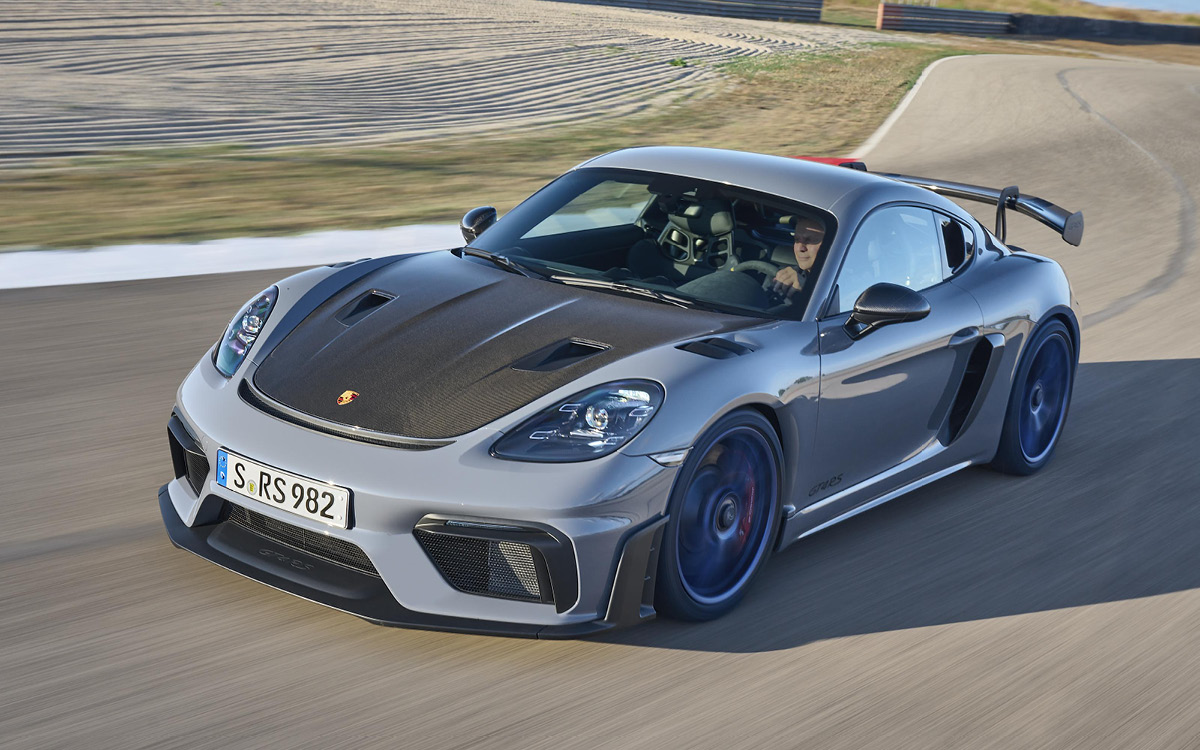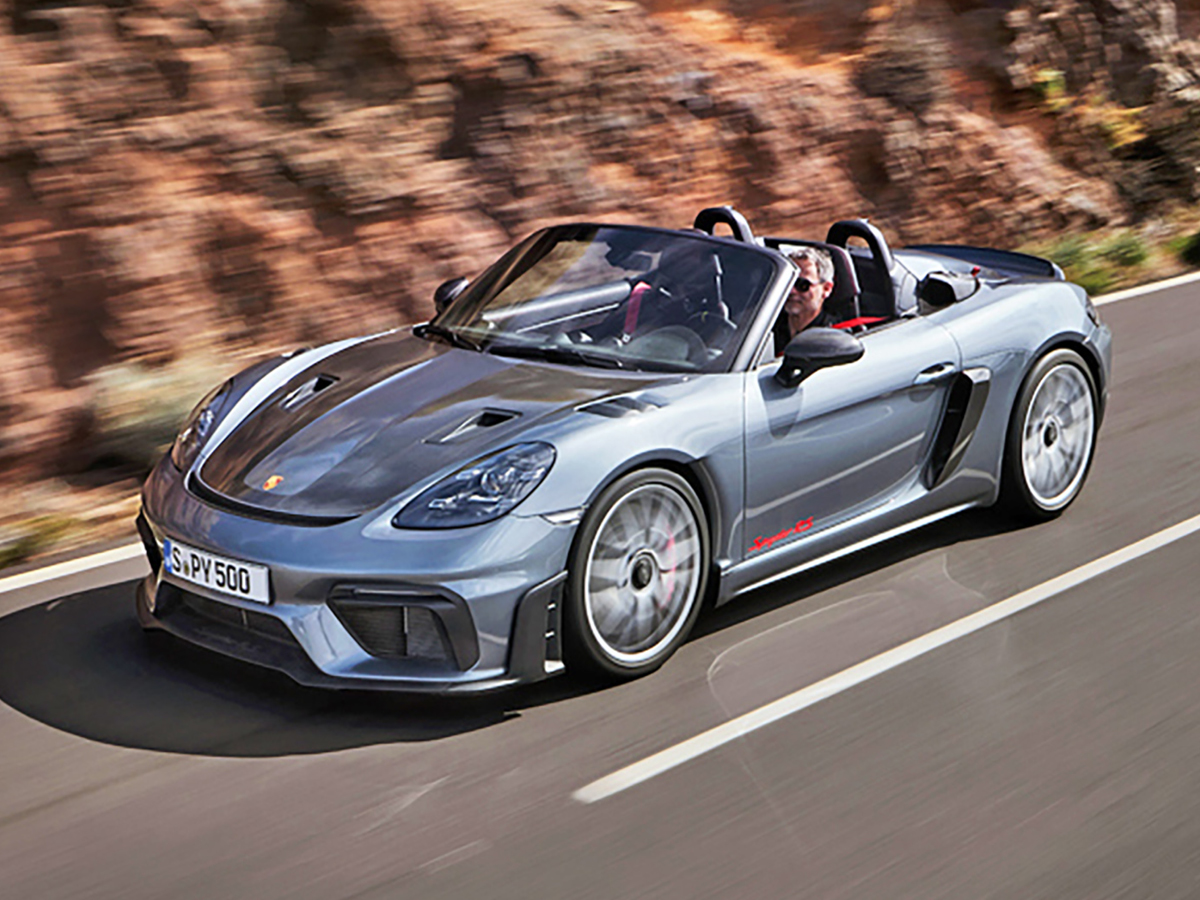Porsche Can’t Stop Making its Sports Cars Hotter.
Porsche keeps reminding us that, in this late stage of internal combustion engine evolution, there are lots more thrills to be had from gas-fueled, piston-engine sports cars. Case in point: the 2024 718 Spyder RS arriving next spring.
You can think of the 718 Spyder RS as either the ultimate Boxster or the open version of the 718 Cayman GT4 RS that joined the line in 2022. The heart of both is the engine from the 911 GT3, minus a few horsepower. The 718 Spyder RS represents an enormous leap past the six-cylinder Boxster and Cayman GTS 4.0 models, which happen to be dynamite on alloy wheels.
Let’s look at why Porsche asks you to make a $65,000+ leap over those cars to get a 718 Spyder RS or Cayman GT4 RS, which start at $160,700.
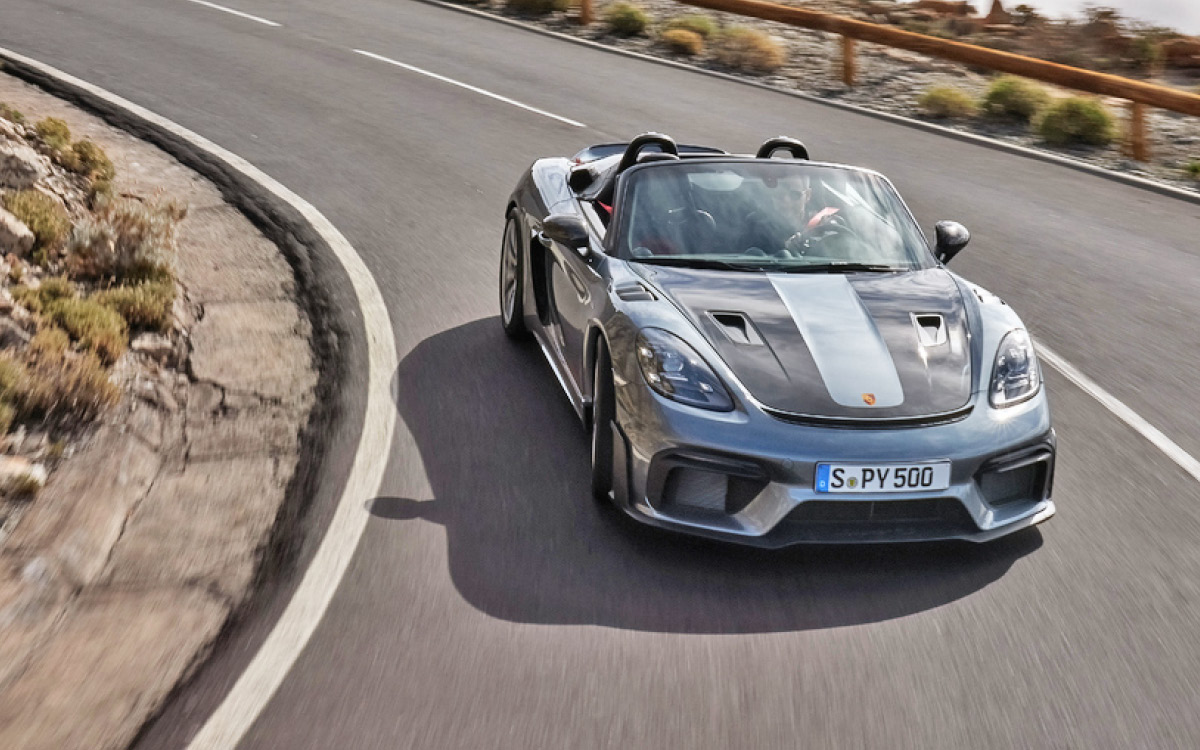
The Mid-Engine GT3?
When the current-generation Boxster and Cayman models took on the “718” model identity in 2016, they also dropped their naturally aspirated six-cylinder engines for turbocharged four-cylinders. Performance was great, of course. Some loyalists, though, wanted the naturally aspirated six-cylinder engines back. Porsche heeded those calls in 2020 with the Boxster Spyder and Cayman GT4.
While all the six-cylinder 718 models use a 4.0-liter engine, only the RS models gete GT3’s version. That seems fitting, as “RS” stands for Rennsport – German for motorsport, of course. Porsche rates this animal at 493 hp at 8,400 rpm and 331 lb-ft. of peak torque at 6,250 rpm. That’s a 99-hp jump over the GTS 4.0 models. (As a side note, that engine used to be rated at 414 hp.)
For the 911 GT3, the output numbers are 502 hp at 8,400 rpm and 446 lb-ft. at 6,100 rpm. Porsche attributes that variance to different exhaust plumbing in the mid-engine models, which is probably true, but it is also a convenient way of maintaining a perceived gap between those cars and the $22,000-more-expensive GT3.
Tale of the Scale
While the 911 GT3 offers a choice between a seven-speed manual transmission and a seven-speed PDK dual-clutch automatic, the 718 Spyder RS and Cayman GT4 RS are PDK-only. The GT3 with PDK weighs 3,164 pounds. The 718 Spyder RS is slightly chunkier at 3,214, and the Cayman GT4 RS adds 13 more – trivial differences.
The 718 RS model weights are just a few pounds under their GTS 4.0 counterparts. Surely, then, using fabric door pull straps instead of proper interior door handles is more of nod to Porsche’s past RS and Club Sport models than a weight-reducing measure.
The Spyder RS gets its distinctive look with its rear fairings, which force the removal of the Boxster’s power convertible top. Instead, as with past Boxster Spyders, you get a minimalist soft top that you raise manually from outside the car. That inconvenience saves 16 pounds from the Boxster. Here again, it’s more about style than function, but that’s also what makes the Spyder so distinctive.
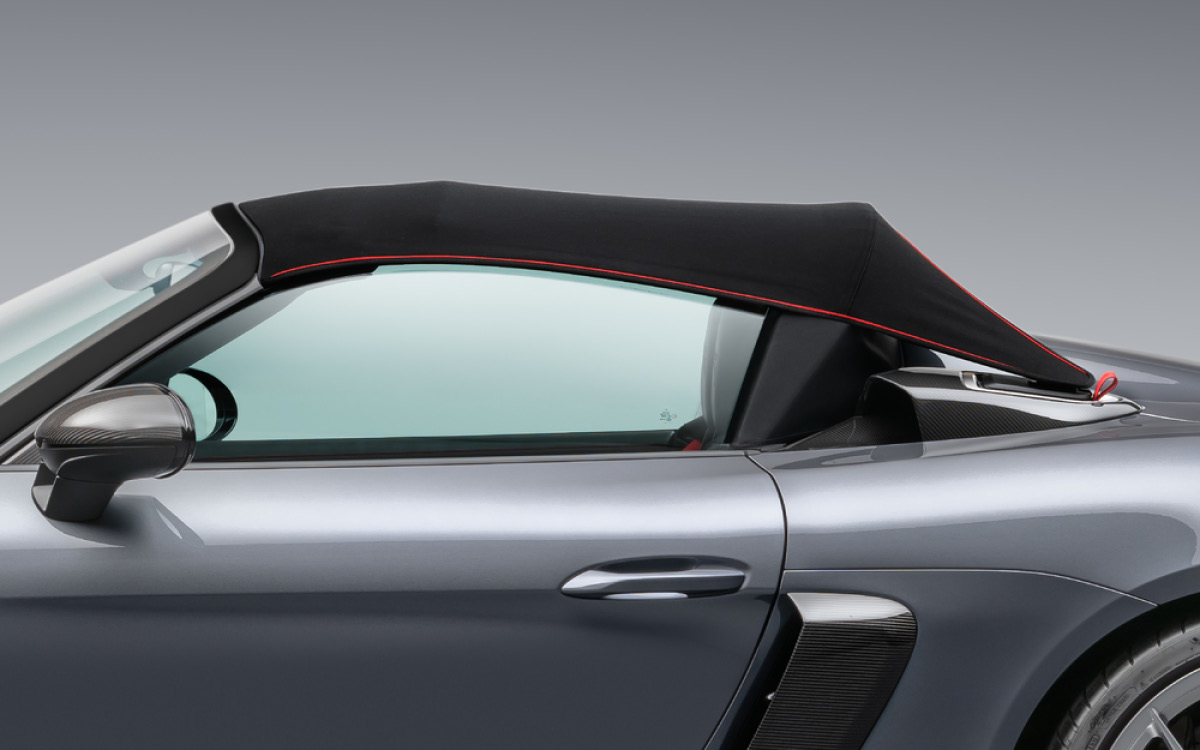
GT3 Power Equals GT3 Speed
The Spyder RS is all about performance, too, of course. And like the Cayman GT4 RS, it is wickedly quick and fast. Porsche claims 0-60 in 3.2 seconds for the Spyder, the same as for the GT3 PDK. In real-world testing, Car and Driver got 0-60 in 2.8 seconds from a Cayman GT4 RS and 2.7 for the 911 GT3, and the Spyder RS should be right there with them. The difference in top track speeds (191 mph for the Spyder RS, 196 for the Cayman GT4 RS, and 198 for the GT3) really comes down to cocktail party boasting material.
On a road course, the 718 Spyder RS could be expected to perform like its Cayman GT4 RS counterpart, which is to say much like the 911 GT3. That’s according to lap times at Virginia International Raceway for Car and Driver’s 2023 Lightning Lap, where the hottest Cayman beat the GT3’s time by just one tenth of a second. Unless you road race for a living, that’s a tie.
It should be noted that the Cayman GT4 RS test car was equipped with the optional Weissach Package that reduced weight to 3,056 pounds thanks to the exposed carbon fiber hood, other carbon fiber body parts, and titanium exhaust tailpipes.
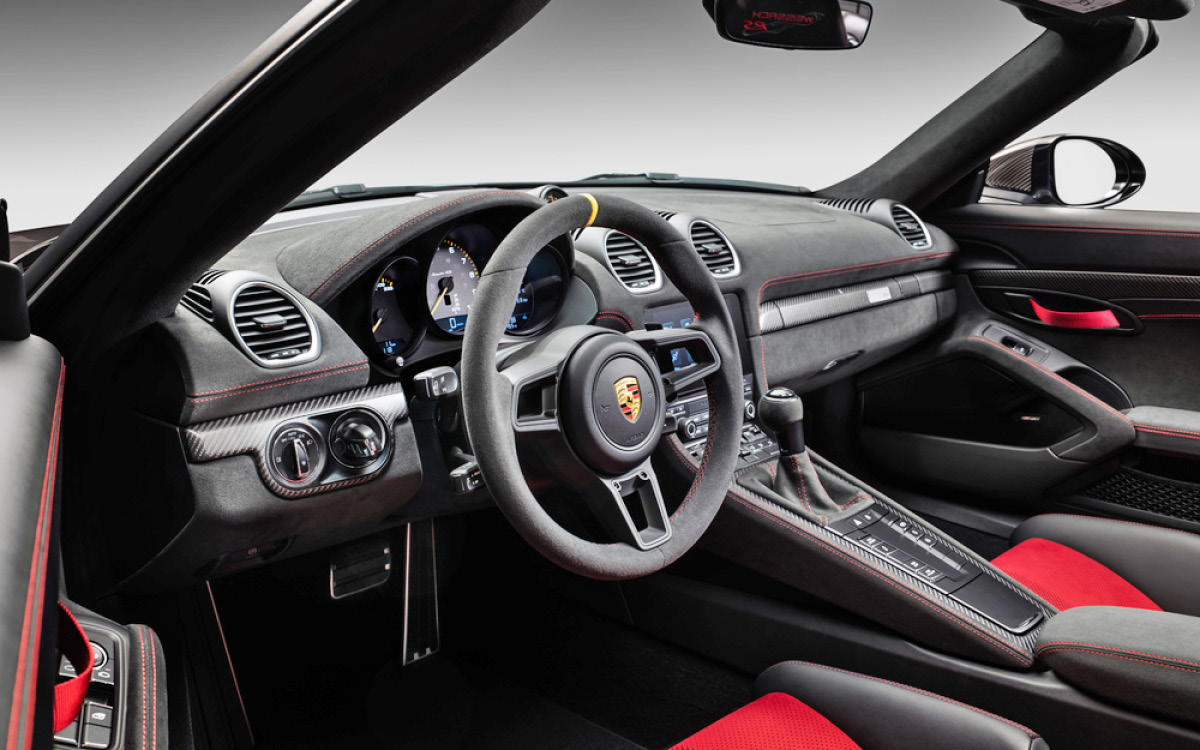
The Right Stuff for the Track
Much more than an engine swap defines the 718 RS models. Like the 718 Cayman GT4 RS, the Spyder RS will come with lowered suspension, Porsche Torque Vectoring with a mechanical limited-slip differential, ball-jointed suspension mountings, and 20-inch center-locking forged alloy wheels. Porsche Active Suspension Management is standard.
Porsche says the Spyder RS gets a slightly less-stiff suspension calibration, so it might not match the Cayman GT4 RS’ lap times. Porsche, though, sees the Spyder RS customer as being a bit more road-driving focused thanks to top-down driving ability.
Unmistakable RS Look
The Spyder RS looks like the Cayman GT4 RS at the front, sharing the hood scoops for brake cooling and functional fender vents. The small scoops on the rear haunches are for engine intake air. The Spyder RS wears a ducktail spoiler to add downforce without spoiling the style with the big carbon fiber wing from the Cayman GT4 RS. Beyond four standard and three metallic paints, including new Vanadium Grey, the Spyder RS will offer Arctic Grey, Shark Blue, and Ruby Star Neo as “special colors” (meaning optional for about $3,500.)
Inside, the Spyder RS is much like its coupe sibling, with Porsche’s carbon-fiber “Full Bucket” seats covered in black leather and perforated Race-Tex seat centers in contrasting Arctic Grey or Carmine Red. Race-Tex also covers the GT Sport steering wheel.
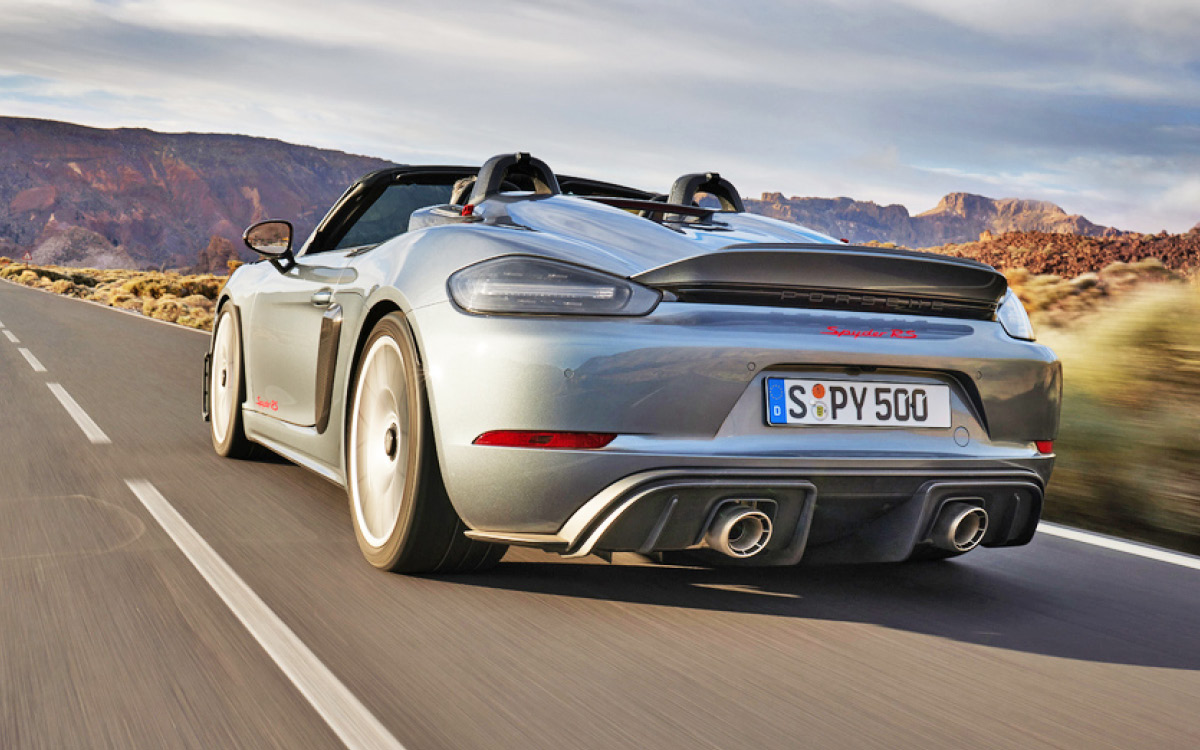
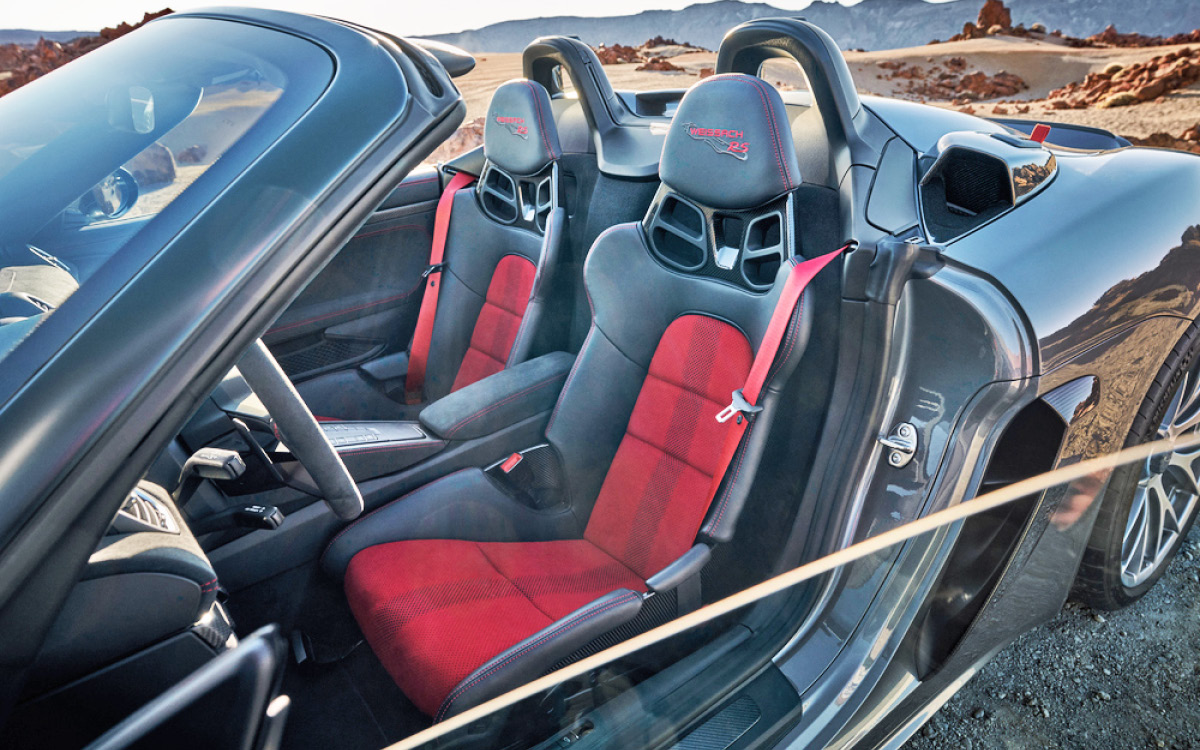
Singing a Newer Tune
When we looked at the Porsche Cayman GT4 and Boxster Spyder models a few years ago, we quoted the Rolling Stones’ 1965 song “The Last Time” to hint at the cars’ possible near-future demise. We’re happy to say we got that wrong.
Six-cylinder 718s are very much still with us in the form of the Boxster and Cayman GTS 4.0 models, plus the 718 Cayman GT4 RS you can get now and the Spyder RS next year. As we reconsider our previous assessment of the automaker’s sports car future, we think it might take wild horses to drag Porsche away from offering such exciting machines.
